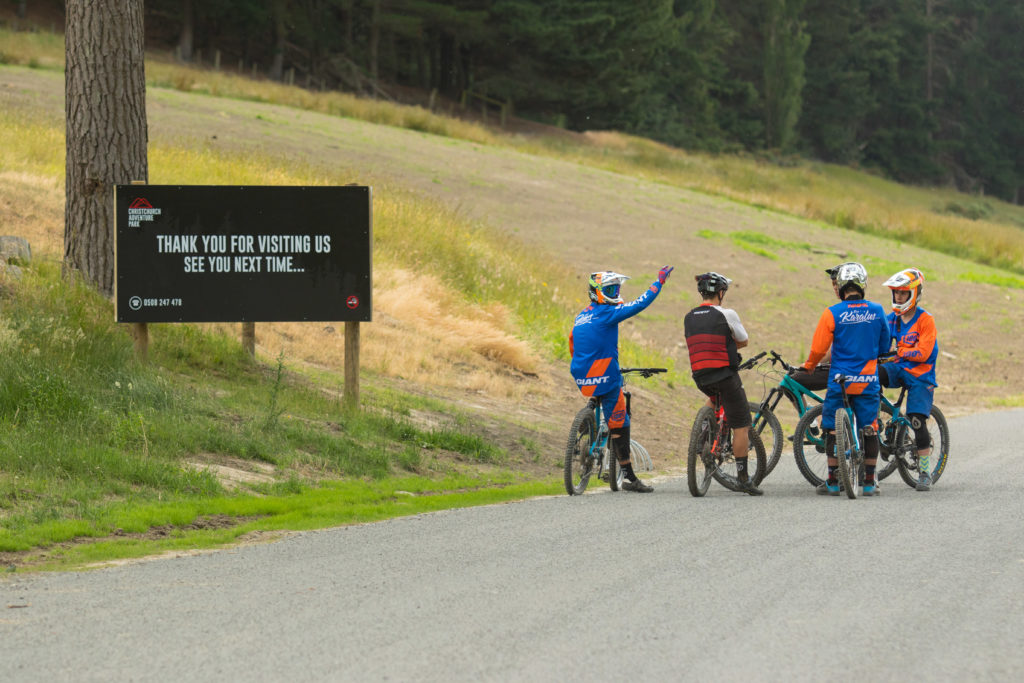Foundations Of Growth In Recreation Activities: Part 1
Cam Cole

Ben and Craig Oliver sample the fruits of Yeah Yeah Gnar at Christchurch Adventure Park. Photo Doug Battersby
It comes as no surprise to me that New Zealand’s first truly dedicated chairlift-assisted, gravity-oriented mountain bike park has been built in Christchurch. Part one in this series highlights two examples of past approaches that led to different outcomes in recreation development, and demonstrates how the decisions of yesterday and today shape opportunities for the future.
I recently moved from Christchurch to Wellington, and it was immediately clear that there was a notable difference in the level of infrastructure on hand supporting the sport I am most passionate about. The Christchurch City Council has been a forward-thinking supporter of mountain biking––among other outdoor activities––since the early 90s. Mountain biking during this period may have been seen as a niche sport, attracting an alternative crowd with few participants. Fast forward to the 2010s and the image of mountain biking has changed, thanks to numerous dedicated individuals, teams with a passion for the sport, and support from landowners and related local bodies.

The forest before the fire. Looking to the upper section of the park from the bottom of the chairlift. Photo Jason Beacham 208 Media
In the early 90s the Christchurch City Council recognized that there was demand for mountain biking on the city fringes. The council identified this as an opportunity to conduct research on the activity after initial observations highlighted a lack of information regarding existing recreation areas. Subsequently the report Mountain Biking on the Port Hills and Christchurch Urban Area was produced by Sara Gerard & Associates in 1995 (Mason & Leberman, 2000). Findings in the report suggested a lack of suitable trails for beginners, and that individual trails were too short in length. Additionally, there was a lack of information directing users to trailheads and where to go once on the trails. Private landowners also voiced concerns about the public accessing their land for recreational use.
Other relevant findings identified that the Council would require trail maintenance and the upgrading of trails if they were to be used more intensively, as well as increased trail signage which was seen as necessary to support the trail network. The report suggested several options for land managers to consider regarding mountain bike use on public land. A decision was made to “identify suitable routes and encourage mountain bikers to use them through education and promotion” (Mason & Leberman, 2000, p. 105). The basis of this decision was to resolve conflict between user groups and also reduce environmental impact. This decision made by the CCC some 24 years ago has subsequently opened the door for many mountain biking-related opportunities, leaving other elected bodies around the country in their dust. As a collective, the Christchurch region is now reaping the rewards of the development of facilities such as the Christchurch Adventure Park.
As a response to the research conducted by the CCC, the Wellington Regional Council tabled a document in 1995 on mountain biking (Mason & Leberman, 2000). The document set out to find the facts surrounding the perceived issues of mountain biking, such as the environmental and social impacts of the sport. The document suggested that in most areas the environmental impacts of mountain biking are minimal, and where there is a significant impact on trails it is manageable and no more harmful than that of other trail users.
The document went on to suggest that the social impacts of mountain biking pose the biggest challenge to users and planners. Walkers felt the dangers of mountain bikers co-using trails were significant, but in reality this perception was not proven by documented incidents. The document also suggested that mountain bikers are themselves at risk, especially when travelling at speed downhill, although one would assume this user group is aware of the risks and perhaps even adds to the experience. The outcome of the Wellington Regional Council’s report identified a primary goal for mountain biking to be accepted as a recognised recreation activity on suitable lands in the region, as well as being undertaken and managed in an environmentally and socially sustainable way (Mason & Leberman, 2000).
The similarities in the outcomes of each report contrasts the difference in the resulting goals of each council. While the Christchurch City Council’s approach was proactive, the Wellington City Council’s approach appears passive in nature.
Part 2 in this series will present and offer considerations, which may be factored into successful recreation development planning and activities.
For additional reading please see the referenced article:
Mason, P. & Leberman, S. (2000). Local Planning for Recreation and Tourism: A Case Study of Mountain Biking from New Zealand’s Manawatu Region. Journal of Sustainable Tourism. 8(2). p. 97 – 115.





